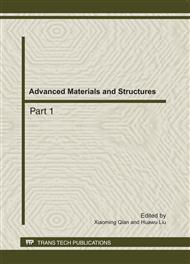p.1029
p.1035
p.1039
p.1047
p.1051
p.1056
p.1061
p.1067
p.1071
Influence of Synthesis Technics and Additives on Cerium Ion Compound Valence
Abstract:
In the system of Ce(NO3)3·6H2O and urea solution during homogeneous precipitation method, hydrothermal homogeneous precipitation coupling method and homogeneous precipitation method with additive, X-ray diffraction (XRD) and transmission electron microscope (TEM) were used to study and characterize the product structures and morphologies. The outer electron configurations and the energy conservation theory were used to analyze the reasons for stability of products and valence state change of cerium ions. The results showed that synthesis technics and additives had a great effect on the cerium ion compound valence. The products were orthorhombic Ce2O(CO3)2·H2O with Valence Ш and orthorhombic CeO(CO3)2·H2O with valence Ⅵ by using homogeneous precipitation method and hydrothermal homogeneous precipitation coupling method, respectively. If an additive (triethanolamine or triethylamine) was added into the homogeneous precipitation system, the products changed into a mixture of orthorhombic CeO(CO3)2·H2O with Valence Ⅵ and cubic CeO2 with valence Ⅳ. It showed that triethanolamine or triethylamine had strong oxidizing properties and played a catalyst role in the reaction.
Info:
Periodical:
Pages:
1051-1055
Citation:
Online since:
September 2011
Authors:
Keywords:
Price:
Сopyright:
© 2011 Trans Tech Publications Ltd. All Rights Reserved
Share:
Citation:


